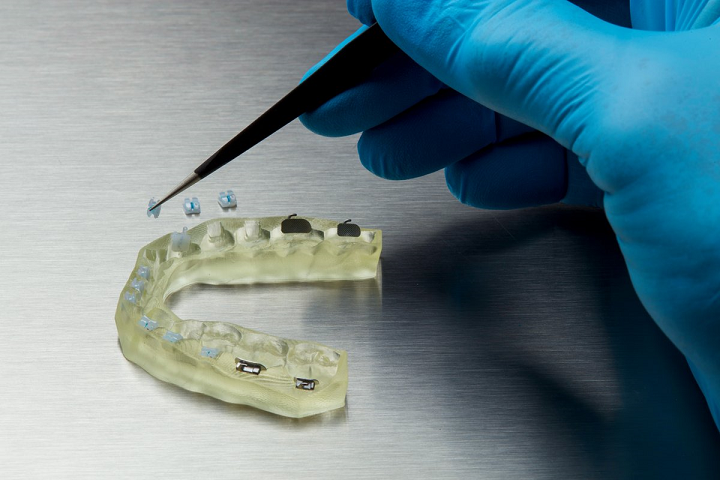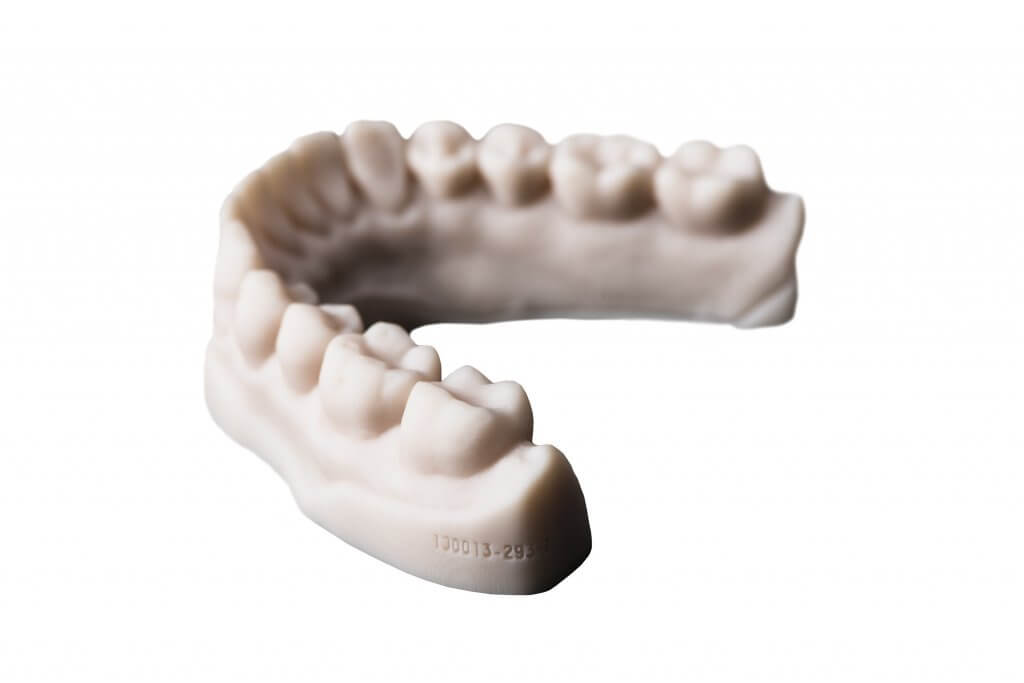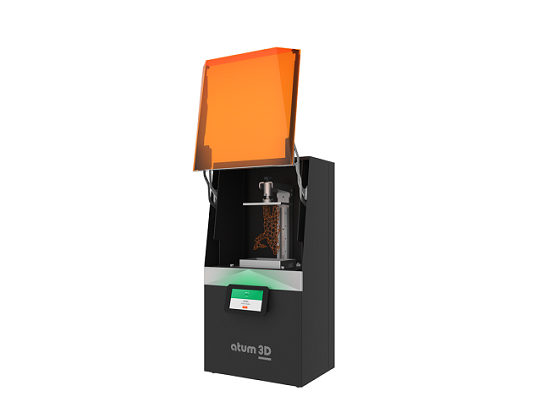If we look at many of the firms working in 3D printing, we can see that they are spending an awful lot of time and money on rounding and fleshing out their product portfolios. Companies are making unique 3D printers for all applications in the desktop segment. In the enterprise segment, they are working with partners to painstakingly bring material, software and printer into concert. The former approach risks leaving everyone unsatisfied with something that really doesn’t work for anyone. The latter risks a lot of time and money spent on imagined futures while the market goes elsewhere.
At the same time, companies such as Stratasys are moving away from a single 3D printing technology towards five different ones, splitting R&D budgets and focus. 3D Systems, meanwhile, is pursuing 3D printed lungs, printers in hospitals, and aerospace parts. Here the application development focus and market fit of many products may suffer if the companies spread themselves too thin. This made me think of French tanks on the border with Germany on the eve of World War Two.
Blitzkrieg
The French spread their tanks along their lines ready to deploy them where needed quickly. The Germans, on the other hand, concentrated theirs into columns. For good measure, the Nazis threw in the first stirrings of combined arms and coordinated an aligned focus of air power, as well.
In June 1940, France had 6,450 tanks. Many were antiquated and all were mainly designed and built for infantry support in trenches. They were different than the most modern of their German counterparts. The Germans had 1,449 modern, mobile, heavy-hitting Panzer III in June of 1940 and 2,439 tanks total. Overall, on the eve of the Nazi invasion, the French had “3,254 tanks, more than the German tank fleet,” in the field in France.
With their Blitzkrieg, the Germans not only won terrain quickly but also ¨aimed for the head,¨ taking out cities, command centers, and infrastructure while bypassing many battles and lines. Aside from combined arms, the concentration of armor and speed was the most notable element of the Blitzkrieg. The Germans had fewer tanks, but they concentrated them all at a single point. The French had more tanks, but they were spread out. Similarly, the French had all of the training and military elements that the Nazis had. Germany, however, combined this to make everything work in concert, a melody of war.
It’s Not the Number of Tanks, but Where You Put Them
By focusing 100 tanks and aircraft on a single thin line of French territory, the Germans were using one tank to partially practice something referred to more broadly as “defeat in detail.” This is when smaller constituent parts of the opposing army are attacked and destroyed sequentially. Rather than take on the whole force at once, with all of its combined abilities, it is sliced, diced and defeated.
Normally an army is made up of different regiments that perform different tasks, making the whole greater than the sum of its parts. In contrast, defeat in detail breaks the opponent down until it is cut away, slice by slice. Here’s a simplified example:
Mary has a smaller army of 300 men and Bob a much larger one of 1,000. Bob divides his forces into ten units on different hills in order to cover a wide area. Mary then attacks each smaller army, one by one. Normally in this scenario, each of Bob’s regiments could come to the aid of another or, ideally, cover the flanks of other units. That way, if Mary attacks one, she risks being attacked from one or both sides by another or worse. However, if Bob does not set up flanking regiments properly, or if they do not communicate well, Mary can exploit these failures to defeat a numerically superior army in stages.
Another way that defeat in detail can happen is by concentrating forces on particular units in order to degrade the opponent’s ability to counteract for the duration of the conflict. Targeting armored vehicles, for example, could make the opposing side less maneuverable, especially for long distances.
How to Smash Them in Detail in 3D Printing
Imagine you’re a new 3D printing company and want to make a name and market for yourself. How do you do it? So far, the path most followed consists of cloning existing systems. Another option, which is the case for Bambu, is making a new 3D printer that broadly defeats the whole desktop market. One could also make extremely low-cost machines, as Creality, Anet and Artillery have done.
There’s also the tactic of developing one’s own, new category and pushing a completely new system with a new architecture as Formlabs did. One could rely on a better service or value in some other way. Sprintray and others have specialized in order to come up with a much better value proposition than generalized printers for specific clients.
I think that there is another way to compete, however, which is similar to existing go-to-market methods, but could be an effective alternative nonetheless.
Example: Vat Polymerization for Dental
 Formlabs IBT Resin
Formlabs IBT ResinLet’s take the dental 3D printing market for vat polymerization as an example. There are established systems with large installed bases, high markups for materials, and a lot of inertia in the form of ETEC and its digital light processing (DLP) technology. We have new, open industrial systems that are not sold with materials revenue in mind. Those are much more apt to be used by cost-conscious customers and those who want to be independent from suppliers. These include Atum3D and Stratasys Origin. There are large-scale systems that will appeal to a niche and are the only ones with that kind of throughput. Think of the iPro stereolithography (SLA) system from 3D Systems.
Star3D offers a chair-side dental solution aimed squarely at an ignored market, but focused entirely on China. Sprintray offers an entire line of machines, including post processing, that no one else has. Formlabs has better software than anyone else, as well as its own specialized resins for easier 3D printing of dental components. Anycubic, Elegoo, Phrozen make low-cost systems, some of which will be used for dental and industrial applications. Asiga is cheaper than the expensive systems while remaining better than the cheap and professional level products.
Now, of course we’re leaving out a good deal of companies. In the interest of brevity, our descriptions of these firms and their market positions are far too succinct. However, let’s imagine that these are the variables we’re working with.
 A Sartomer Carbon part
A Sartomer Carbon partIn this scenario, every company’s market position looks very logical. Indeed, we see similar positioning in other segments. When considering how to compete in this market, we might quickly realize some things. A firm may not have the muscle or volume to compete head-on with Formlabs. They may not also have the ability to manufacture the largest systems, given the high unit cost and complexity. One would be tempted to find gaps in the market and exploit gaps in other players’ lineups.
What if we took a “defeat in detail” approach? We take a printer that is open and more productive than the $30,000 Atum3D DLP station. We sell this system at a loss for $15,000 through similar channels and markets that Atum3D is aiming for. We aim for the same clients and approach all existing customers that they have. Our aim is not market share here. What we are trying to do is to knock Atum3D out of the market or to get them to reposition themselves to a different segment.
We then target Origin One customers, selling five of our systems for $70,000, which gives clients more flexibility and yield than the Origin One at greater floor space and less cost. Again we’re not aiming to “corner the market.” In this case, we’re trying to change the minds of whomever does capital allocation at Stratasys so that they would give more money and heft to another part of the business.
Next, we target the home market of Asiga and go for its top of the line dental systems, finding success in the Max segment and more ($13,990). Then, we introduce a single dental resin with approvals for $70 per liter instead of $300 to $800. We still only have a single model of printer and push it out the door efficiently. It’s open in terms of architecture and now comes with the lowest cost usable resin in the industry.
We keep pushing until the mid-segment customers willing to spend $15,000 to $30,000 uses our printers extensively. We then dispense with selling 3D printers and continue selling a credible and still profitable resin at low cost. All the while, we weren’t doing razors and blades as people thought. We weren’t buying market share as a goal.
What we were doing is taking a circuitous route to becoming a credible supplier for one single dental photopolymer to the broader market. We just produce this resin, which we make ourselves cost effectively. We focus on just this one. We don’t expand our line up to the myriad of different tray, restoration, or clear materials. Now, we have a highly profitable product that we target specifically at customers that we understand.
Now, let’s say we just bought those resin printers from an external party and lost $5,000 per printer while selling them to 1,000 dental labs worldwide. That’s $5 million in marketing, which is a lot of money but not a lot to have displaced Arkema and Stratasys in one segment of the resin market. Additionally, if our 1,000 labs use three liters of resin a month, we will be generating $210,000 a month in materials revenue.
Think about what kind of work, marketing, credence, references, and money that would normally take if you did it another way. If one would attack Arkema and other photopolymers companies head-on, they would do more to push you out of the market and sell against you. However, if you are an OEM with a side business in resin, you’re a potential partner like so many others. Subsequently, you can put onto the market much cheaper materials segment by segment and conquer the photopolymer sector. What looks at first glance to be dumping, buying market share, or ordinary competitive behavior is ultimately an example of applying defeat in detail to a 3D printing segment.
Weak Where They Are Strong. Strong Where They Are Weak
If you came up with some no name resin company you’d find it tough-going to get adoption for your brand. It would also be difficult to convince people to leave a sure bet for an unknown one. It would be expensive to generate the IP and innovation necessary to offer an alternative that was somehow better.
With the comparatively high-cost of manual labor, conveyancing, and post-processing, as well as machine time, resin prices are a component, but not a deciding factor for many users. Additionally, much lower-priced photopolymers would be suspect rather than welcomed. However, they can be made and available for the prices indicated. What’s more important is that the market is penetrated but by players unaware of that fact.
In the outlined scenario, we would be attacking them where they are weak with something that they are unwilling to do: compete on price and a limited selection. By reducing our production complexity and cost, we could also quickly scale and offer an inexpensive product. Crucially, we could offer a product at very high quality, as well. We would have to get the chemistry right and obtain the necessary biocompatibility approvals. However, after that, we could offer comparable quality and standards.
Such a company could move, ship, and get new customers faster. It could focus on just this one type of client with a single resin. It could study and know its market players and playing field much better than competitors could. While everyone would be busy understanding a sector that stretches from automotive to medical, this hypothetical firm would only focus on a single, tiny sliver of the dental segment. It would only work with high-volume dental labs that would be price conscious about price-sensitive parts. This would be the lever with which such a business would move the world.
Subscribe to Our Email Newsletter
Stay up-to-date on all the latest news from the 3D printing industry and receive information and offers from third party vendors.
Print Services
Upload your 3D Models and get them printed quickly and efficiently.
You May Also Like
Havaianas Collaborates with Zellerfeld to Launch 3D Printed Flip-Flops
The shoe of the summer is undoubtedly the flip-flop. Easy on, easy off, your feet won’t get sweaty because there’s not much material, and they’re available in a veritable rainbow...
UCLA Researchers Develop 3D Printed Pen that May Help Detect Parkinson’s Disease
Diagnosing Parkinson’s disease is difficult. Often, early symptoms of the progressive neurological condition may be overlooked, or mistaken for signs of aging. Early diagnosis can help save lives and improve...
Printing Money Episode 30: Q1 2025 Public 3D Printing Earnings Review with Troy Jensen, Cantor Fitzgerald
Printing Money is back with Episode 30, and it’s that quarterly time, so we are happy and thankful to welcome back Troy Jensen (Managing Director, Cantor Fitzgerald) to review the...
Heating Up: 3D Systems’ Scott Green Discusses 3D Printing’s Potential in the Data Center Industry
The relentless rise of NVIDIA, the steadily increasing pledges of major private and public investments in national infrastructure projects around the world, and the general cultural obsession with AI have...

































